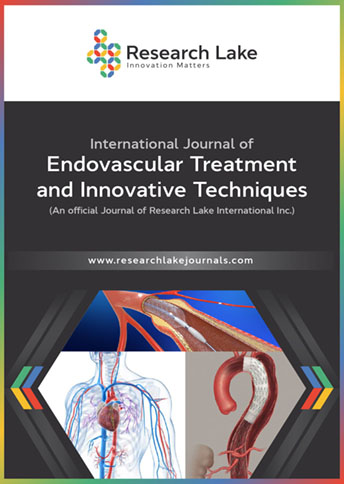Endovascular Treatment of Infected Aortic Aneurysms: A Retrospective Multicenter Analysis from the GORE®GREAT Registry Study
Abstract
Objective: The Global Registry for Endovascular Aortic Treatment (GREAT), which is a retrospective sponsored registry (W.L Gore & Associates; Flagstaff – AZ; USA), was queried to evaluate the outcomes of infected aortic aneurysms (inf-AAs) after abdominal (EVAR) or thoracic endovascular aortic repair (TEVAR).
Methods: This is a multicenter, observational cohort study. For the current study, all patients were treated only with the standard GORE® devices for INFAA. Primary graft infections, aorto-enteric fistulae, and graft-enteric fistulae were excluded, as well as cases that did not meet the predefined criteria of an inf-AA. All serious adverse events within 30 days of the procedure were documented by sites. Primary outcomes were early (≤ 30 days) and late survival, and freedom from endograft infection.
Results: Thirty-one (0.6% of the entire GREAT cohort) patients met the inclusion criteria and were included: 23 (74.2%) were males and 8 (25.8%) females. The mean age was 72 years ± 11 (range, 49-92). This included 26 (83.9%) abdominal inf-AAs and 5 (16.1%) thoracic inf-AAs. Operative-related mortality occurred in 1 (3.2%) patient. Immediate conversion to open surgical repair was not required. Mean follow-up was 23.6 ± 15 months (range, 1-49): estimated survival rate was 80% (95%CI, 60.8-90.5) at 12 months, and 53.2% (95%CI, 30.0-71.1) at 48 months. Secondary aortic rupture as well as endograft explanation was also not reported.
Conclusion: Endovascular treatment of inf-AA is feasible and effective. While endograft infection was not detected during the follow-up, long-term results from GREAT registry may reveal how durable T/EVAR could be for inf-AAs.
Copyright (c) 2024 Gabriele Piffaretti, Viviana Grassi, Chiara Lomazzi, Fred Weaver, Tim Mandigers, Daniele Bissacco, Gib Upchurch, Santi Trimarchi

This work is licensed under a Creative Commons Attribution-NonCommercial 4.0 International License.
Copyright © by the authors; licensee Research Lake International Inc., Canada. This article is an open access article distributed under the terms and Creative Commons Attribution Non-Commercial License (CC BY-NC) (http://creativecommons.org/licenses/by-nc/4.0/).











